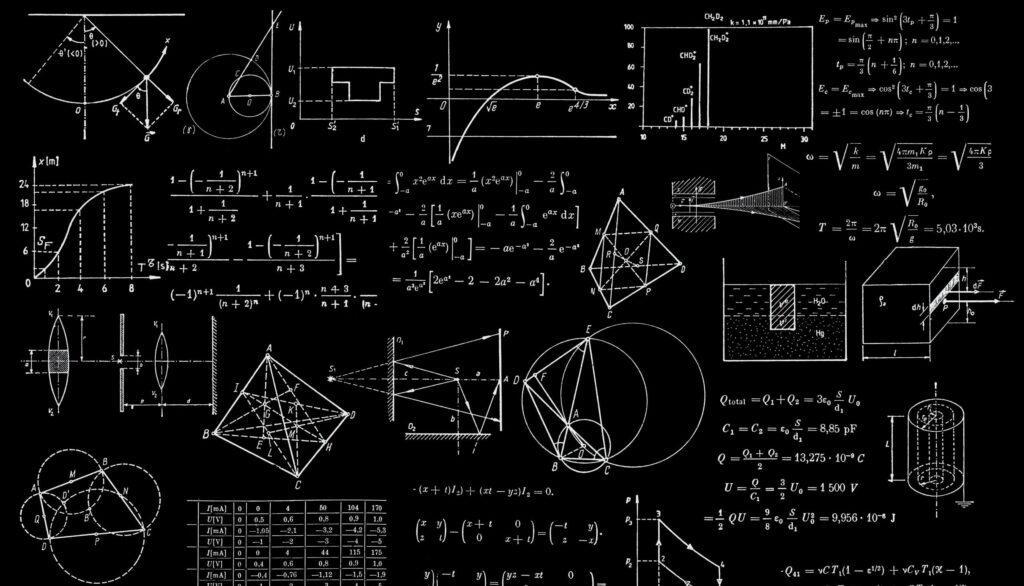Will there be a new breed of pocketable supercomputers soon?
To start the new year off with something a bit out of the ordinary, let us look into what quantum computing has to offer to us “regular” human beings. We will soon familiarize ourselves with terms like superposition, interference or quantum entanglement but lets first start with Quantum supremacy which is a term first coined by John Preskill, the American theoretical physicist. To quote the relevant Wikipedia article, quantum supremacy refers to the “engineering feat of demonstrating that a programmable quantum device can solve a problem beyond the capabilities of state-of-the-art classical computers”.
There are calculations and challenges that make even the latest state-of-the-art supercomputers sweat heavily or just give up completely. To put this statement into perspective, a supercomputer with its petaFLOPS of computational power and hundreds of CPU cores is more than 1 million times more powerful than your average M1 Macbook but there are cases where even that is just not enough. That is why scientists are working on a completely different technology that can create computers harnessing the phenomena of quantum mechanics and go well beyond what is possible today, and give an answer to our currently unsolvable challenges.
If at this point you think that quantum mechanics is something purely theoretical that only comes up in the latest Marvel movie or only gets occasionally mentioned by Sheldon in The Big Bang Theory here are some quick facts about some real-world experiments from recent years:
- In October 2019, Google AI Quantum (with the help of NASA), became the first to announce achieving quantum supremacy by performing calculations on the Sycamore quantum computer more than 3,000,000 times faster than they could be run on Summit, which is currently considered to be the world’s fastest computer. (Although, this claim has been continuously challenged by IBM and some others.)
- In December 2020, a group at USTC implemented a type of Boson sampling with a photonic quantum computer (called Jiuzhang) to demonstrate quantum supremacy. The creators claim that an “ordinary” supercomputer would require 600 million years of computational time to generate the number of samples their quantum processor can generate in under 20 seconds.
- You can also check out IBM’s very own quantum computing development roadmap which has some pretty serious commitments here: https://www.ibm.com/quantum/roadmap
So, how do quantum computers work?
Quantum mechanics in physics is the area that studies the behavior of (tiny) particles at a microscopic level. At these subatomic levels, the equations that describe how particles behave are vastly different from those that describe the world we see around us. Quantum computers are built to take advantage of these behaviors to perform their computations in a completely new way.
When diving head first into the “quantum realm”, my main interest (besides the actual practical uses) was how a quantum computer actually works because this is a truly mind-bogglingly fascinating topic. The quantum processor itself is not much bigger than the one you find in a plain old notebook but in order to make it work it needs extreme cooling and because of that the complete quantum hardware system ends up being around the size of a 4-door car. By the way, this still makes them smaller than the current generation of supercomputers. The system uses superfluids and superconductors, so it operates on temperatures only a smidge above the absolute zero temperature. (If you would like to have a wild ride just start a web search around how these near absolute zero temperatures are achieved technically.)
At such ultra-low temperatures, certain materials become superconductors meaning electrons move through them without any resistance. The state of the system is then controlled by microwave pulses. (I apologize here for the bit of generalization as there are other types of quantum computers besides the mentioned superconducting machines like trapped ion quantum computers or quantum dot computers..etc. but the first seems to be the closest to quantifiable real-life results.)
A traditional computer uses bits, these have a binary state so they are either 0 or 1, like a light switch ON or OFF. A quantum computer uses qubits (or quantum bits) which according to the rules of quantum mechanics can be in a (non-binary) superposition state. Like Schrödinger’s cat, the system can be in different states at the same time so the cat can be alive and dead simultaneously. If a traditional bit is like the two sides of a coin, heads or tails, then the qubit is a bit like spinning the coin on a table. So much like nature, it only picks a side on its state when we measure it. This might look bizarre or confusing but if you think about it, many possible effects around us are also often masked out on the human scale.
Probabilistic values and entanglement
Quantum computers use superposition, entanglement, and interference to carry out complex calculations. Qubits take on quantum properties of probability so the bit is both zero and one, with coefficients of likelihood. As mentioned previously, this is only until measured because their discrete value is determined when being measured. One of the lucky aspects of qubits is that they are made up of quantum particles so they are subject to the already mentioned quantum entanglement and this allows us the usage of coupled probabilities. This enables quantum computing to run quantum algorithms developed to solve new problems, ranging from pharmaceutical drug development and turbulent fluid dynamics to cryptography.
A state contains a coefficient for the likelihood of being zero and a coefficient for the likelihood of being one but when the qubit is observed, the value discreetly becomes zero or one. Our qubits are usually subatomic particles that can exhibit the probabilistic properties of quantum mechanics. Let’s think of an electron or photon. The exciting bit is that several particles can become coupled in probabilistic outcomes in a phenomenon called quantum entanglement, in which the outcome of the whole system is no longer only dependent on the outcome of its independent parts.
In “classical” computing, a two-bit system contains four states: 00, 01, 10, and 11. The specific state of these four options can be defined using only two values, these are the defining two bits but as you are probably getting used to it by now, quantum mechanics is not so simple and begs to differ. A two-qubit quantum entangled system can have four states, just like the classical system in our example. However, there is an interesting phenomenon as these four states exist probabilistically, all at the same time, requiring four new coefficients (instead of just the independent coefficients) in order to represent this system. Going further, for N qubits, 2N coefficients would be required, so to simulate just 300 entangled qubits, the number of coefficients alone would be greater than the number of atoms in our known universe.

How does coding look like on a quantum computer? (optional)
Because of this highly probabilistic nature, quantum computers do not run traditional algorithms. Quantum algorithms are designed like tiny circuit diagrams, utilizing quantum logic gates. The main challenge here is that the outcome of the algorithm has to be deterministic despite the undefined and probabilistic nature of the underlying system. This is creating a new field of computer science, with new career paths opening for quantum algorithm engineers.
A superposition can be represented mathematically with non-zero coefficients but quantum computers do not have traditional arithmetic or logical operators. In fact, “if” or “while” loops don’t exist on quantum computers (yet). That is why you cannot recompile your classic C++ code and simply run it on a quantum computer. I would say that most quantum computers today are still at the Assembly level and higher-level programming languages are not available yet.
So, what you actually do in an algorithm is apply operations in manipulating the superposition equation before making your final measurement. Our operators are the quantum gates and we use them to manipulate the superposition state. Conceptually, a quantum gate acts much like matrix multiplication on a vector (the superposition state) in linear algebra which sounds like high-school math but we are only at the beginning. We know that with careful computational system design, many problems can be solved through linear algebra. In quantum mechanics, the Schrödinger equation describes how states evolve and that is a really linear system, and nature is also governed by this very same quantum mechanics. In classical computers, a vector contains exactly one value (1 or 0) and this greatly limits the expressiveness of the system. However, with quantum computers, we can manipulate billions of information simultaneously with a single quantum operation and this gives the revolutionary edge of the technology.
While developing quantum algorithms, scientists often find corresponding classical algorithms that can match the performance of the quantum algorithm. That’s one of the reasons why proving quantum supremacy is so difficult and that is why Google’s quantum supremacy claim draws so much attention. What scientists strongly suspect is that quantum supremacy needs a quantum algorithm that utilizes quantum entanglements. The parallel manipulation of the superpositions seems to be the key ingredient where the quantum entanglements are the secret sauce as seemingly this entanglement moves 3 trillion meters per second so around 10 million times faster than light. This means that adding more and more entangled particles doesn’t result in any measurable increase in computation time.
Why are quantum computers faster?
For example, proteins are long strings of amino acids that become useful biological machines when they fold into complex shapes so figuring out how proteins will fold has big implications in drug development and other biological fields. A supercomputer is great at sorting through a big database of protein sequences, but it will really struggle to see patterns in the data that would determine how those proteins behave exactly. This is because a supercomputer tries to fold a protein with brute force, leverage its many processor cores, and check every possible way of bending the chemical chain before coming up with an answer but as the protein sequences get longer and become more complex, the supercomputer starts to run out of breath. A chain of only 100 amino acids could in theory fold in multiple trillions of ways. This simply means that there is not enough memory even in today’s best computers to handle all the possible combinations of individual folds. On the other hand, quantum algorithms approach these sorts of complex problems differently. They create multidimensional spaces where patterns linking individual data points become visible. In the case of our protein folding problem, the solution to the problem might be the combination of folds requiring the least energy to produce and quantum computers are much better at finding such nuanced patterns due to their inherent nature.

Quantum computing in practice
There are not only new quantum startups popping up every day but there are also well-established global brands already using quantum computing. For example, IBM is working with Mercedes-Benz, Mitsubishi Chemical, ExxonMobil, and also CERN to build quantum computing into their everyday future.
At Mitsubishi Chemical and Keio University, researchers are studying lithium superoxide rearrangement, a really critical chemical step in lithium-oxygen batteries. They are using quantum computers “to create accurate simulations of what’s happening inside a chemical reaction at a molecular level.” Similarly, Mercedes-Benz is also studying new ways to create a new breed of batteries for their electric cars. With quantum computing on its side, the company set out to make a positive impact on our environment and be carbon neutral by 2039. Electrically powered vehicles run on batteries and these still seem to be the weak link in the chain. Simulating what happens inside a battery is extremely difficult with today’s technology but quantum computing can provide a much more accurate representation and exponentially speed up development cycles.
With traditional computers, calculating routing combinations quickly becomes near impossible so ExxonMobil has started using quantum algorithms in finding the most efficient routing to ship clean-burning fuel across the world. Similarly, for CERN it would be impossible to sort through the immense amount of data and figure out patterns in their stream from the Large Hadron Collider (LHC) so quantum technology helps us better understand the events of our universe.
In general, quantum computing seems to be the best at:
- Computer-aided drug design and generative chemistry
- Computational biology
- Machine learning
- Search problems
- Cryptography
Will Elon Musk finally pursue quantum computing?
Seemingly our South African hero is involved with many businesses where quantum computing could be a great benefit. Self-driving, AI, space shuttle coordination, and Neuralink all seem to be fitting subjects that could win big with a new level of computing technology. We also know that Tesla has been using a huge supercomputer powered by NVIDIA GPUs for processing its FSD data for years to build better Machine Learning models. This has 5,760 NVIDIA A100 graphics cards installed in 720 nodes of eight GPUs each making it capable of 1.8 exaflops of performance, so it is clearly amongst the top supercomputers in the world. The main mission of this system is “autolabeling”, so adding labels to raw data making it usable in the decision-making process of the self-driving system. The majority of recognition a self-driving car does come from fitting sensor data to already pre-processed models of the world with predetermined actions assigned, just as we humans learn to recognize driving conditions from our past experiences. Their Dojo system promises to up even the previous supercomputer and accelerates massively how quickly their ML models are improved. During AI Day, Musk claimed that just four cabinets of Dojo systems can do the same autolabeling work as 4,000 GPUs in 72 racks put together. However, we can already see that scaling of the Dojo technology will come to a limit and as much as the quantum computing field would benefit from Elon joining the game, his businesses would benefit equally from removing the current computational limitations.
Probably stopping him and many others from jumping in is that building a quantum computer is quite a bit of an engineering feat. Besides the extreme cooling required, the system is extremely sensitive to its environment so removing quantum decoherence is a top challenge. To make sure our measurements are accurate they are often done thousands of times and then their end result is only determined statistically. In order to make the system more fault tolerant you want to add more qubits but Paul Davies and others argued that a 400-qubit computer would even come into conflict with the cosmological information bound implied by the holographic principle (an axiom in string theories). Also, qubits that can be initialized to arbitrary values and qubits that can be read easily are still ahead of us to invent. After a certain number of instructions, qubits start to produce inaccurate results, and quantum computers currently lack error correction to fix this issue. Quantum computing is very expensive, even a single qubit could cost up to USD 10 000, sourcing wires and lasers needed to make each qubit to maintain control is also challenging as there is only one company making them, the Japanese Coax Co.
Finally, currently, e-mails, online card payments, bank records, and most of our standard information systems are protected by the RSA (Rivest–Shamir–Adleman) public-key encryption. Our data safety is guaranteed by the fact that breaking that with current computers would take billions of years but with the overwhelming processing power of quantum computers the internet would quickly become unsafe if used for malicious purposes.
My strong belief is that quantum computing won’t become available to the masses overnight and I also think that it will co-exist with our current computing technology instead of replacing it. In chemical development, it has extraordinary advantages and can revolutionize how we create cures for Alzheimers, cancer, and many other diseases but the technology is still in the early stage of its development. If you see it differently or would like to have a chat about the topic, please drop me a line directly.



